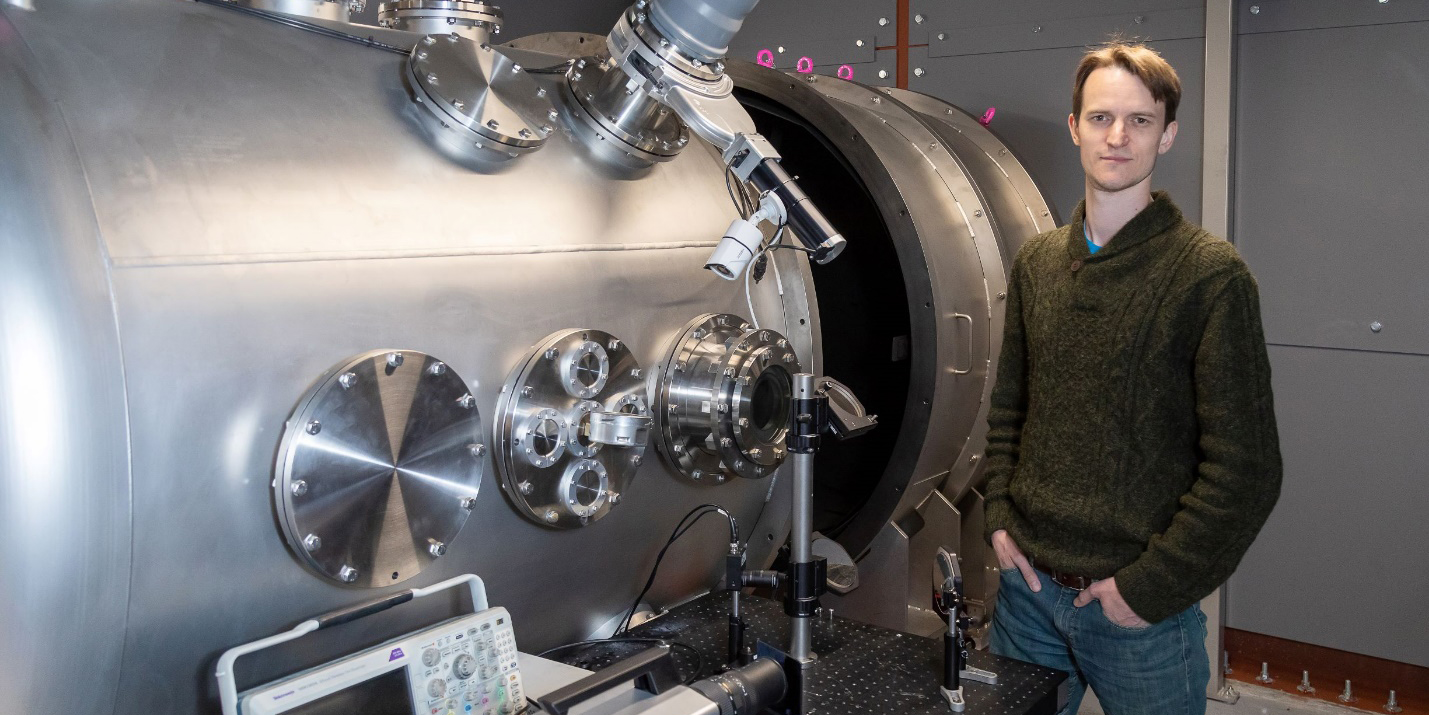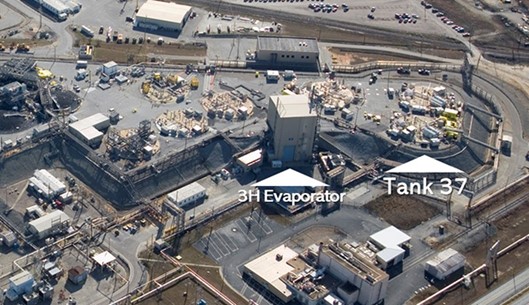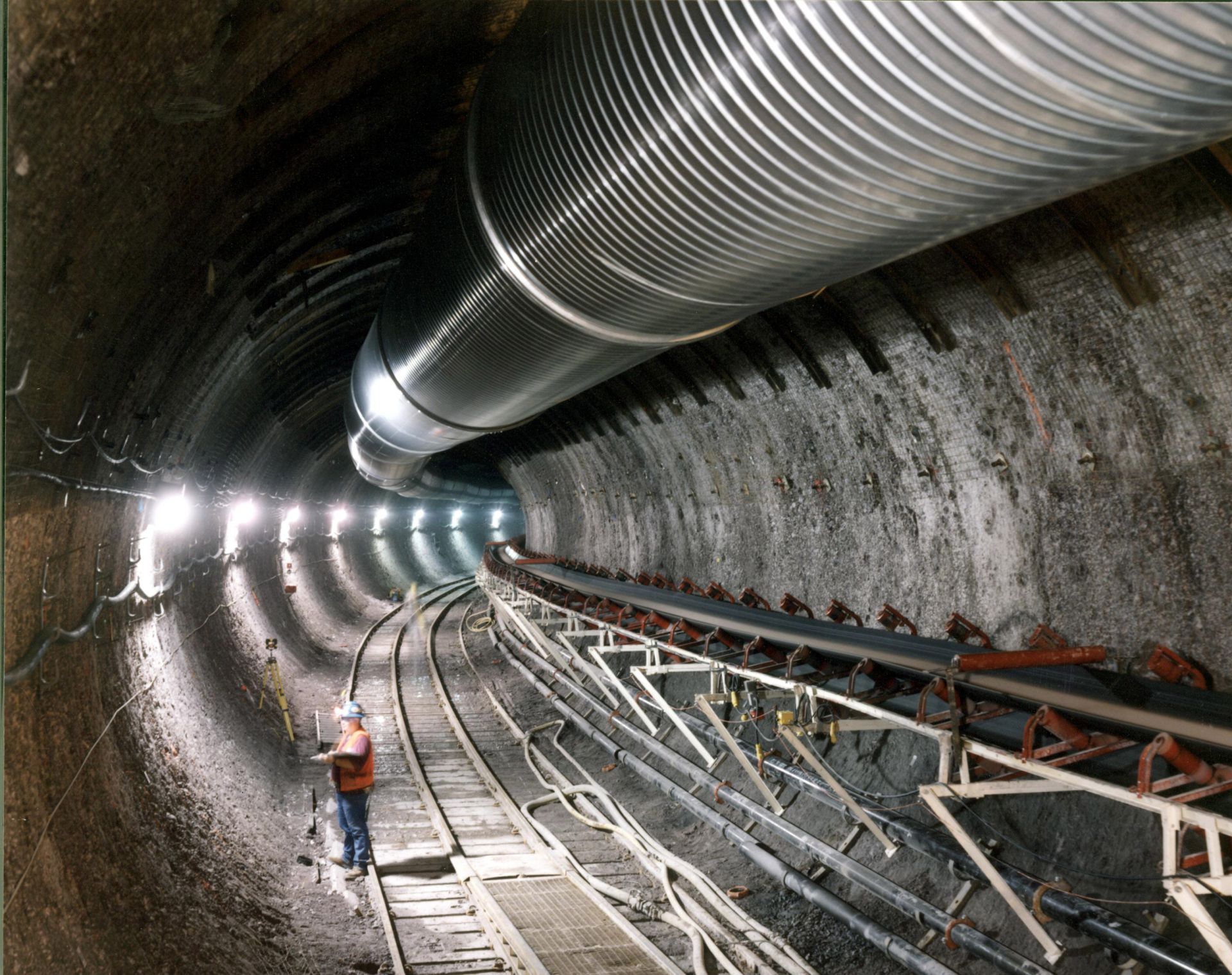The Crab nebula, an iconic Milky Way supernova remnant, as viewed by the Herschel Space Observatory and the Hubble Space Telescope. (Image: NASA, ESA, and Allison Loll/Jeff Hester, Arizona State University)
Traces of freshly made plutonium and radioactive iron recovered from the bottom of the Pacific Ocean are contributing to an understanding of how heavier elements are created from exploding stars and other cosmic events, according to a National Public Radio report.
First Light Fusion CEO Nick Hawker stands near the target end of the 22-meter-long gas gun. (Photo: First Light)
Inside a new steel-clad facility nicknamed “The Citadel,” First Light Fusion has installed a 22-meter two-stage gas gun—the third-largest such component in Europe.
“Big Carl,” the world’s largest land-based crane, lifts the second of three prefabricated steel rings that will form the reinforced cylinder around the nuclear reactor at Hinkley Point C from its bunker to a lay-down area in late April. (Photo: EDF)
EDF has signed a new membership agreement with the United Kingdom’s Nuclear Advanced Manufacturing Research Centre (AMRC) to drive innovation in low-carbon power generation and support U.K. manufacturers, the University of Sheffield–based center announced recently.
Canada’s pickering nuclear power plant. (photo: opg)
A collaboration agreement signed by Ontario Power Generation’s Center for Canadian Nuclear Sustainability, Canadian Nuclear Laboratories, and SNC-Lavalin will build on Ontario’s extensive nuclear industry expertise and skilled workforce to support the decommissioning of CANDU reactors in Canada and around the world, according to a May 13 press release from the organizations. The work will include the decommissioning of OPG’s Pickering nuclear power plant following the end of commercial operations in 2025.
New York’s Indian Point-3 was scheduled to close in April 2021.
At present, more than 20 commercial nuclear power plants in the United States have entered the decommissioning process, and many indicators point to a coming wave of additional plant closures. Indeed, with increasing numbers of plants terminating operations due to unfavorable market conditions, some voices have deemed this the “age of decommissioning.”
Regardless of whether a plant shuts its doors earlier than anticipated or seeks a life extension through relicensing, all plants eventually close. When they do, the closure sets off a wave of economic impacts ranging from minor disruptions to severe and long-lasting harm.
A salt dissolution campaign in Tank 37 at the Savannah River Site was completed ahead of schedule, creating tank space for evaporator operations and allowing for more feed to the Salt Waste Processing Facility. (Photo: DOE)
Department of Energy contractor Savannah River Remediation (SRR) announced on May 11 that it has completed a salt dissolution campaign in Tank 37, one of the underground tanks storing high-level radioactive liquid waste at the Savannah River Site (SRS) in South Carolina.
EnergySolutions will acquire Kewaunee for decommissioning. Photo: Dominion Generation
Utah-based EnergySolutions has entered into a definitive agreement with Dominion Energy to acquire the closed Kewaunee nuclear power plant for prompt decommissioning. Located about 30 miles southeast of Green Bay, Wis., the single-unit, 574-MWe pressurized water reactor was shut down in May 2013 for financial reasons.
Sandia National Laboratories (Photo: SNL)
For the latest installment of its webinar series—Spotlight on National Labs—the ANS Young Members Group focused on Sandia National Laboratories. The webinar, which took place on May 11, is available to view on demand.
The underground Exploratory Studies Facility at Yucca Mountain in Nevada built by the Department of Energy to determine whether the location was suitable as a deep geological nuclear waste repository. Courtesy of the Department of Energy.
It is no secret that the U.S. government’s program to manage and dispose of used nuclear fuel and high-level radioactive waste is in a deep ditch. Private companies continue to safely store used fuel at U.S. nuclear reactor sites, some of which ceased power operations decades ago. Other countries, such as Finland, Sweden, France, Canada, Switzerland, Russia, and China, are moving forward on permanent disposal, while for the past 11 years, the U.S. government has done nothing constructive to discharge its HLW disposal responsibilities. Rather than taking action, successive Congresses and administrations have sat on their collective hands.
A deposition tunnel is excavated into bedrock at Finland’s Onkalo facility. (Photo: Posiva)
Posiva Oy, the company responsible for the disposal of Finland’s spent nuclear fuel, announced last week that it has begun excavating the first disposal tunnels at the Onkalo deep geologic repository near the Olkiluoto nuclear power plant.
The demonstration program aims to accelerate innovation and deployment of energy concepts at the intersection of industry needs, NRIC’s mission, and the R&D portfolio of CTD IES. (Graphic: BEA)
The National Reactor Innovation Center (NRIC) wants to hear from developers and end users interested in integrated energy systems for advanced reactors. Battelle Energy Alliance (BEA), the managing and operating contractor for Idaho National Laboratory, has issued a call for Expressions of Interest for a potential multi-phase demonstration program for innovative uses of nuclear energy, to be carried out by NRIC and the Crosscutting Technology Development Integrated Energy Systems (CTD IES) program. The final date for responses is May 21.





















